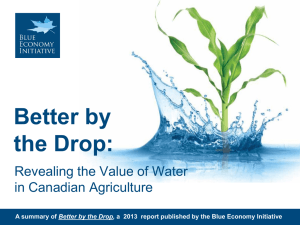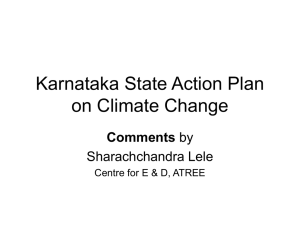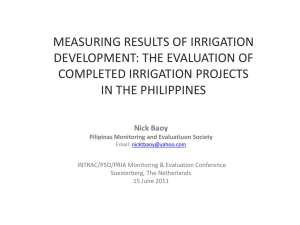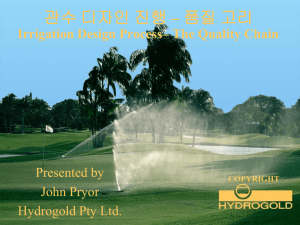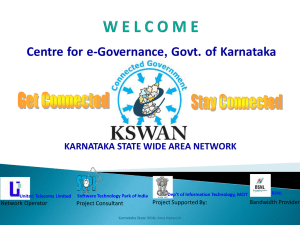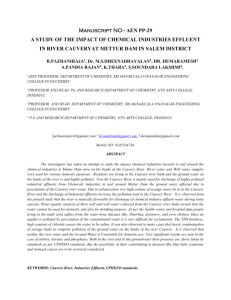Presentation - Irrigation Australia
advertisement
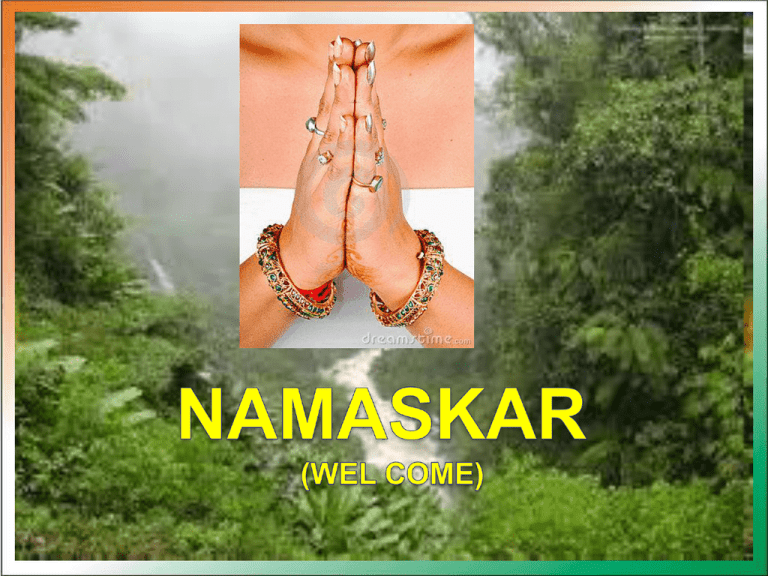
1 63 rd International Commission on Irrigation and Drainage, Executive Council Meeting, 7th Asian Regional Conference And Irrigation Australia 2012 24 - 30th June, 2012 Adelaide, Australia 2 ON-FARM VALIDATION AND ASSESMENT OF WATER PRODUCTIVITY UNDER CAUVERY COMMAND AREA KARNATAKA, INDIA RAMANAGOWDA, P., KRISHNA MURTHY, N, AND SURESH NAIK, K.P. Department of Agronomy, College of Agriculture, University of Agricultural Sciences, GKVK campus, Bengaluru 560065, India 26-06-2012 3 Background • India has the 5101 irrigation dams, Of which 390 are under completion. Karnataka state has two major river basins namely Cauvery and Krishna command supporting in irrigation for crops. • In Cauvery command area rice, sugarcane, pulses, oilseeds and other plantation crops are cultivated. • The problem are loss of water between the head and delivery to an extent of 40 per cent and the unscientific water usage in cultivating the crop. • Resulting in very low water productivity and net irrigated area limited to 60 per cent. 4 Karnataka Agriculture Karnataka state is one among Five southern states of India comprising of 10 Agro-Climatic Zones (ACZ) The ACZ wise area shows that there are only class II, class III and class IV lands totaling to 14.41 m ha are available for agriculture production to 4.64 m.ha land available for non agriculture production The major area of 41 percent is available under class III followed by class IV - 23 percent and class II -19 percent for agricultural use inclusive of rainfed and irrigated agriculture representing 70 percent and 30 percent respectively 5 Fig. 1: River Basin in Karnataka 6 Table .1: Agriculture Zone-wise total Geo. area, Gross cropped area, Net cropped area and Gross irrigated area in Karnataka Zone No. & Name Total Geographical Area 1. North Eastern Transition Zone 871036 Gross Cropped Area Gross Cropped Area 727186 571007 Gross Irrigated Area 67843 2. North Eastern Dry Zone 1762604 1526720 1251861 348257 3. Northern Dry Zone 4783642 4478665 3432394 1703510 4. Central Dry Zone 1943830 1254076 1129389 282459 5. Eastern Dry Zone 1808217 861375 802088 222375 6. Southern Dry Zone 1739430 1032601 813227 435546 7.Southern Transition Zone 1218029 828012 612488 280641 8. Northern Transition Zone 1194941 1120569 845599 178591 9. Hilly Zone 2560727 738262 691093 151384 10. Coastal Zone 1167380 325205 269646 118533 19049836 12892671 10418792 3789139 State Total Unit: Area in Hectares 7 Table.2:WATER RESOURCES OF KARNATAKA Sl. No. River System 1 2 3 4 Krishna Cauvery Godavari West Flowing river 5 North Pennar & South Pennar TOTAL Estimated Annual average yield in M.cum TMC % 27,451 12,034 1,415 56,600 969.44 425.00 49.97 1998.83 27.90 12.23 1.44 57.51 906 32.00 0.92 98406 3475.24 100 8 HYPOTHESIS Conveying large amount of water in open canals and providing to fields through field channels has poor conveyance efficiency, soil erosion due to high velocity of water, difficulties in measurement as well as recurrent mantainance problems. The high cost involved in water storage and irrigation, losses (seepage, percolation, evaporations, and transpiration loss by weeds) to be minimized from 45-55 per cent to ensure high water productivity. 9 LOCATION The location was Goravanahalli, Maddur taluk, Mandya district, Cauvery command, Karnataka. The local practice of letting the water in open canals and cultivating rice and other crops The study involving supply of water through pipes from main canal to the field with several gate vales to regulate the water supply to individual crops and fields. The various crops tested were rice with scientific water management practices, (need based irrigation) in terms of time and quantity have been fallowed. 10 Krishna Raja Sagar (1944) 11 Virija Anicut Project in Cauvery Sub-Basin 12 Main canal without water Main canal with water RAGI RAGI MULBERRY SESAME RICE FORAGE SUGARCANE On-farm Installation of main and sub pipes RESULTS AND DISCUSSION The total length of pipe line laid was 1500 meters coasted Rs.8 lakhs. This worked out to be Rs. 21025 per farmer, resulting in saving of water valuing of Rs. 114000 per cropping season while an amount of Rs. 44444 per hectare was the unit cost of pipe and accessories. The payback period of the total investment made on the pipes may be 6-7 year. Under normal usage, life expectancy of the pipes ranges from 12 to15 years. The effect of the modern and scientific method of water management in most of the tested crop were ranging from 25 to 30 per cent. Above all the indirect benefits such as retaining the good health of soil and reduced cost of cultivation thereby increasing productivity per drop of water. This study clearly indicated that there is possibility of doubling the water productivity across crops season and location. 17 Conclusion The various crops tested under this study of piped water supply were sugarcane, Rice, ragi, mulberry and fodder crops could save irrigation water to an extent ranging from 20-50 per cent, it was worked out by the saved water of 975 cm through piped water could irrigate the additional crop area to an extent of 15.6 hectare of ragi or 6 hectare of aerobic rice or 3.6 hectare of sugarcane. Besides the modern and scientific method of water management among the tested crops were ranging from 25-30 per cent higher yield this study clearly indication that there is possibilities of doubling the water productivity across the crops, season and locations. The overall saving in the investment and maintenance of canal, gates etc are the benefits and the overall life span of pipe and other accessories one time investment and life span of ten years without any maintenance. Based on the findings a pilot project at Haveri district in lift irrigation project from Varada river by providing piped water for irrigation has resulted a high water productivity under participatory mode Based on the present finding the government of Karnataka has initiated the supply of irrigation water through pipes in all the major and minor irrigation 18 command areas Fig. 2 : large scale cultivation of Rice under piped water supply 19 Fig. 3 : Public-Private Participatory Development 20 Fig. 4: Bottom up approach for development 21 DHANYAWADHA (THANK YOU) STORE, SAVE WATER FOR FUTURE 22 Contact for further information: drrg.btib@hotmail.com sureshpnaik@gmail.com 23



